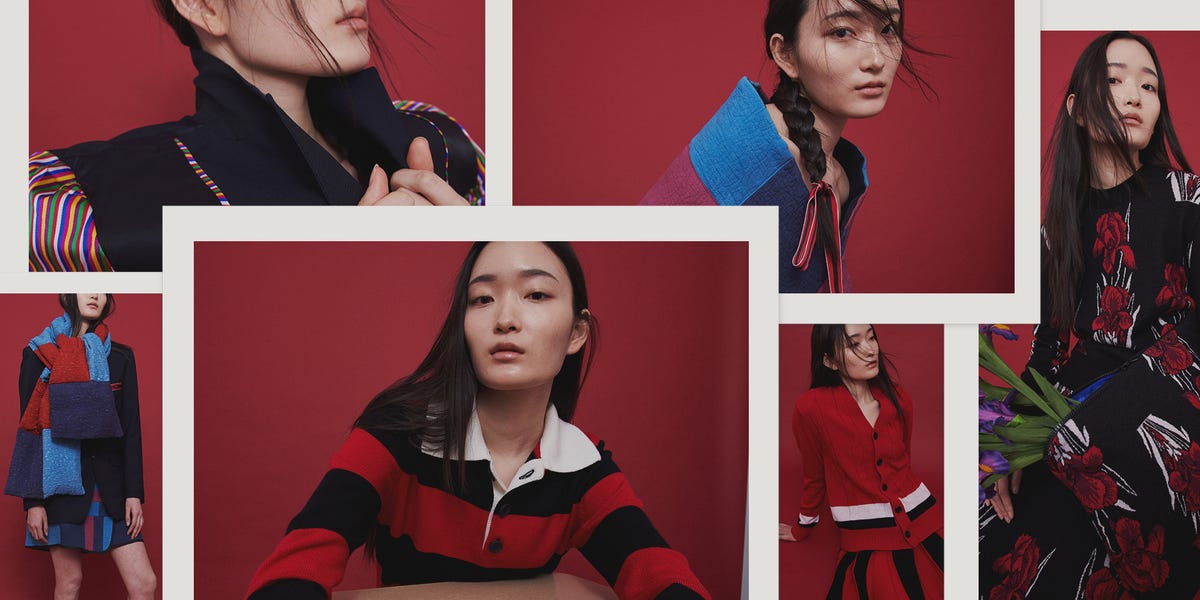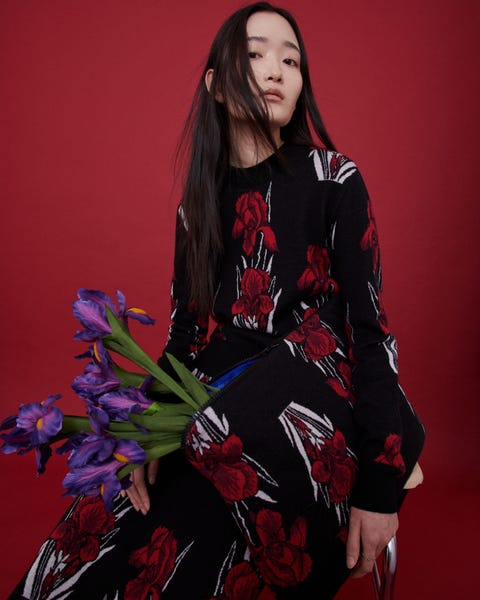Style Points is a weekly column about how fashion intersects with the wider world.
After producing her beloved, ’90s-inspired namesake line for a decade, Jennifer Chun was getting a little burned out. The process had become “so routine that I wasn’t thinking outside the box anymore,” she recalls. “I would produce two seasons and then ship it. It was almost like I was becoming a little bit of a robot in the process.” Her husband and business partner was the one who suggested she rethink things, take a break, and “not do this until you want to again.”
She did stints in costume design and worked for a few sustainability-focused brands, something that “opened my eyes to a whole different process and customer.” But it wasn’t until lockdown hit that she started to dream about creating a new line of her own. Chun was watching K-dramas during the pandemic, after having grown up on the genre (she remembers renting them on VHS tapes at Korean grocery stores back in the day.) “I realized that even being Korean American and having grown up in the Midwest most of my life, my cultural roots are pretty deep. It might be because you’re so insulated; in the Midwest, you’re one of the few Asian families,” she says.
After reading an article about a natural dyer in Seoul (South Korea has a longstanding tradition of the craft), Chun and her mother, who was isolated in L.A. due to Covid restrictions, began corresponding with her. When Chun finally made a trip to Seoul, the dyer let her assist and learn about the process. That experience led her to create a line, Uniformed, where she works with Korean artisans and uses repurposed and deadstock materials and natural dyes. While she’d mainly worked in wovens before, Chun liked the idea of incorporating knitwear “because none of the yarns are wasted. You don’t have all this leftover fabric being thrown away. You’re using exactly what you need.”
One standout of her debut collection is a blazer inspired by the school uniforms in K-dramas and developed with a suiting patternmaker in Manhattan’s Garment District. Its sleeves are lined with brightly striped saekdong fabric, woven by artisans in Busan. (It’s the same fabric that lines the sleeves of a hanbok, the traditional Korean garment.) On the left side of the blazer, where a school name tag would normally be pinned, “Uniformed” is embroidered in Korean on a piece of ribbon. The piece has been a sellout item, with DMs about it pouring in before Chun even opened her online shop.
A matching knit set and clutch with iris patterns were inspired by a vintage shirt of her grandmother’s, which recalls the pattern on plastic gambling cards called hwatu cards. In Korea, irises are a symbol of hope, which was also the theme of this pandemic-born collection. The preppy side of the line comes out in a rugby sweater, modeled after one Chun borrowed from her dad in the ’90s, but unexpectedly made from merino wool, and in box-pleated miniskirts.
Chun’s heritage is embedded in every piece. Her wrap skirts drew on the custom of pojagi, or patchworking leftover fabric scraps together as a way to wrap gifts or food containers. Dam yo (blanket) scarves, which are stuffed with repurposed and upcycled down fabric, were based on the traditional Korean blankets she grew up using. And she made a point of working with an all-Asian team on the lookbook, which was shot by Peter Ash Lee. When she showed the resulting images to the dyer, she told Chun, “‘You respected Korea and you made it look true to our cultural heritage.’ And that was the biggest compliment, because that’s what I really wanted to do.”
Everything was made in small batches to eliminate waste, something that has become a selling point for the brand. When Chun told a friend that she would only make a limited amount of items based on how much fabric and yarn she had left, she suggested, “‘Why don’t you label that in your clothing?’ So it’s exciting, because people will see, ‘I got the second one made out of 10, because the first one was the sample.’”
As with many sustainable brands, there isn’t a plan for wild, full-throttle growth. But Chun plans to expand, judiciously, into accessories and homeware, and work with more artisans across Asia. “And if somebody has leftover fabric or yarn,” she says brightly, “then I’ll use it.”
One of the highlights of the process: Chun finally got to make a trip to Korea with her mother, who gathered a group of childhood friends who’d heard about what they were doing. “It was the most beautiful thing. They all pulled together and brought their used hanboks,” she says. The women shared the memories behind the garments before offering them to Chun to repurpose for her designs. “It was almost to the point where I was like, ‘I don’t want to cut up any of this!’ But they don’t feel that way. They all want to be a part of it.”






